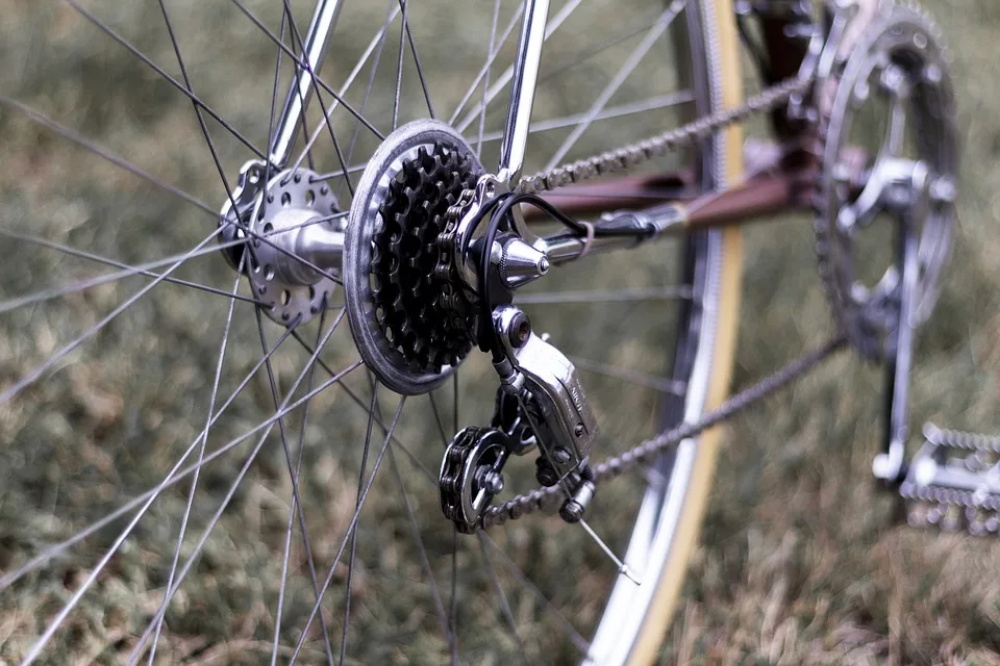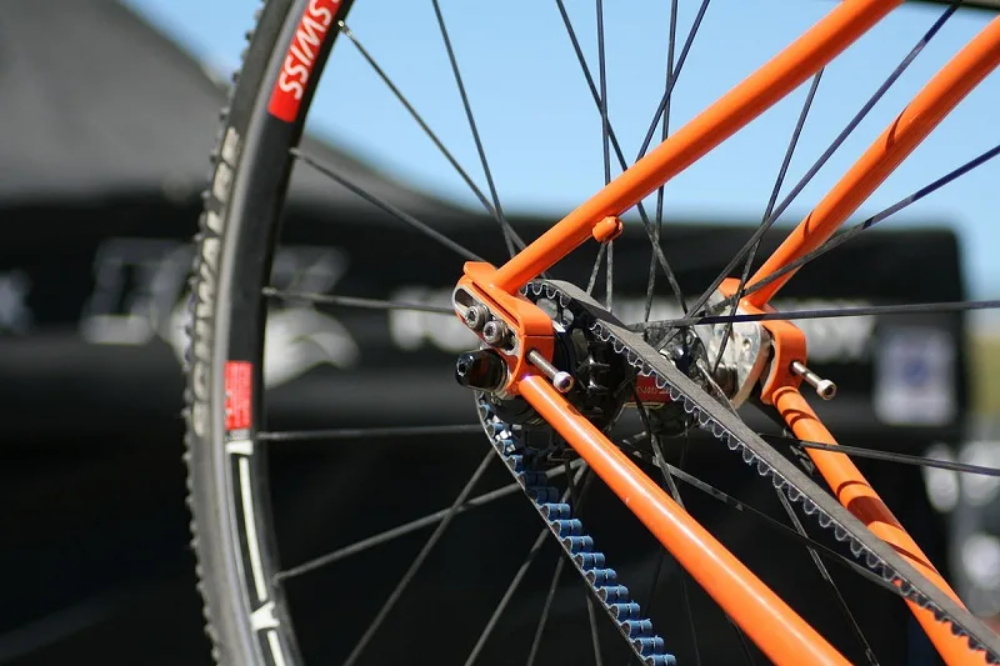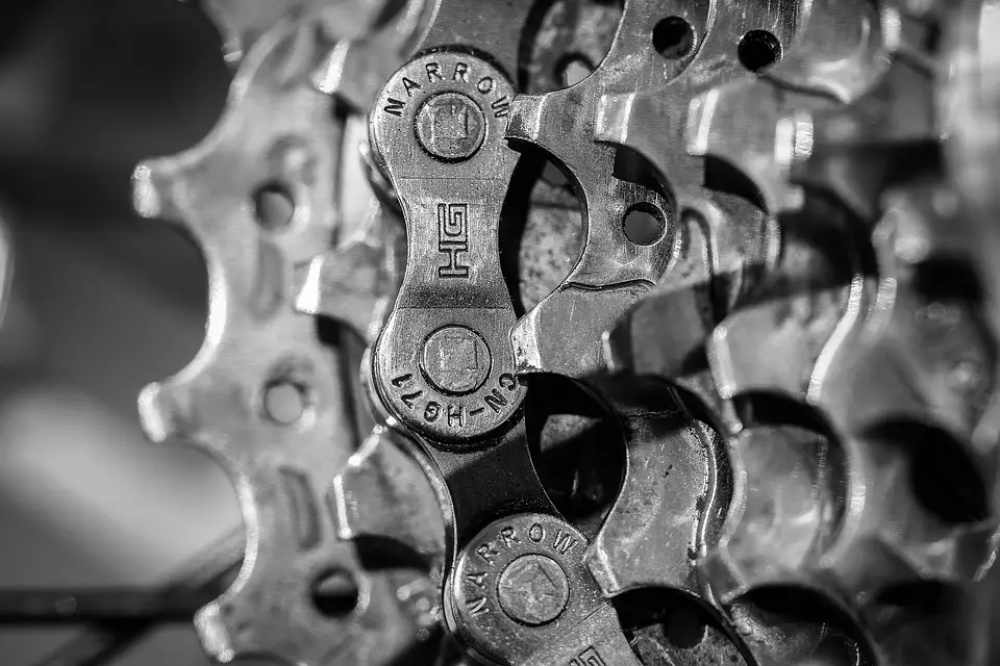Chain vs. Belt-Driven Bicycles: Pros and Cons

Belt drives on bicycles are becoming more and more popular. Especially among cyclists and commuters. This guide outlines the pros and cons of chain-drive bikes versus belt-drive bikes to help you decide which drive system is best for your riding style.
What is a belt drive bicycle?
The belt-driven bike uses a nylon toothed timing belt reinforced with carbon fiber cords to drive the rear wheel. Use a belt instead of a traditional bicycle chain. Belts are paired with durable stainless steel cogs and alloy sprockets. The result is a very strong, clean and long-lasting drive system that requires little maintenance. This is the same belt technology used in belt-driven motorcycles and racing engines.
Belt-driven bikes are very popular among commuters because of their low maintenance requirements and cleanliness. Cyclists and bike packers are switching to belt drives due to long maintenance intervals.
Advantages of belt drive
Less maintenance – this is the main reason to switch. Belt drives are virtually maintenance-free. You don’t need to lubricate or adjust them regularly. If they get caked with mud, all they need is a quick scrub. They just keep working.
Belt drives last longer than chain drives – properly maintained belt drives last 3-5 times longer than chain drives. Some riders have run 20,000 miles (about 30,000 kilometers) off a single belt. Most chains only last 3000-5000 miles.
Cleaner-belt drive does not require lubrication. This means you don’t have to get your hands dirty to clean and oil. Because the belts are not lubricated, they don’t easily pick up dirt or sand. Having said that, some cyclists do choose to apply a little silicone oil to their belts. This lubricant can make belts last longer and run smoother, but is usually not needed.
Quieter – Belt drives operate almost silently. This allows you to hear birds, cars, wind, and everything going on around you. The chain makes some mechanical noise. Especially when using the transmission to shift gears.
Lighter – The belt weighs only about 87 grams. A standard bicycle chain weighs about 300 grams. There’s also less gear you have to carry. For example, you don’t need to carry a chain breaker, extra links, chain lube, degreaser or chain cleaner when traveling with a belt drive. This cuts a lot of weight and bulk from your kit. Having said that, internal gear hubs are heavier than derailleurs. All things considered, switching to a belt drive saves about 100 grams.
Mechanically simpler – the belt itself has no moving parts. They are made in a cycle. Nothing like the pins, rollers or plates on a bicycle chain can stretch or wear out. Of course, if you need a belt driven gear, you have to use an internal gear hub. This adds more complexity than a derailleur.
Less efficiency is lost over time – belt drives don’t stretch or wear like chains. They retain their shape better over time. The gears and sprockets also wear out at the same rate as the belt. This means that the drive system remains efficient for the life of the belt. Chains, on the other hand, tend to stretch and wear out. They also have different wear rates than cassettes and sprockets. As these components wear out, their efficiency decreases.
The drivetrain is always straight – the most efficient drivetrain is a straight line between the front sprocket and rear gear. With a belt drive, the drivetrain is always straight because the belt never moves between the gears. Shifting all happens in the hub or in the gearbox. Chains usually run at an angle. This happens when you drive towards the high or low extremes of the gear range using the transmission settings. This is inefficient and wastes energy. Of course, if you’re using an internal gear hub or pinion gearbox with a chain, the drivetrain is straight as well.
Corrosion Free – Belts are made from modern synthetic materials including nylon and carbon fiber. These materials will not rust. This feature makes belt drives an excellent choice for areas where corrosion is common, such as near the ocean.
At higher power outputs, belts are more efficient than chains – if you’re a particularly strong rider, you may see an increase in efficiency over 212 watt-hours of power output. For more information, check out our great article on Belt Drive Efficiency at Cycling About.
Belt drives are modern and high-end – if you’re the type of cyclist who likes to use the latest and greatest equipment in the sport, belt drives can deliver.

Disadvantages of belt drive
Belts are only compatible with internally geared hubs, pinion gearboxes or single speed gears – belt drives are not compatible with derailleurs because belts cannot run at an angle. It has to run in a straight line. This limits your drivetrain choices.
The frame must be compatible – A belt drive compatible bicycle frame must have a split somewhere in the rear triangle so that the belt can be installed. This is necessary because the belt is a continuous loop. It cannot be installed separately like a chain. Another consideration when choosing a belt-drive compatible frame is stiffness. If the frame bends too much, the belt will jump under load. Your frame also needs a belt tensioner. They come in three types, Eccentric Bottom Bracket (EBB), slip release or horizontal release. I’ll discuss belt-compatible frames in detail later in this guide.
Belt drives cost more than chain drives—a new belt can cost $80 to $100. A new front and rear sprocket costs about $60 to $80 each. Also, you will need an internally geared hub. For a high-end option like the Rohloff, this can cost hundreds of dollars to over $1,000. You can buy a brand new derailleur kit for the price of a replacement belt and sprocket. Of course, belt drives have a much longer lifespan than chain drives. If you take that into account, the cost will be closer.
Spare parts are harder to find – If you’re riding in a developing or remote area, it can be difficult or impossible to find replacement belts or sprockets. Many small bike shops and department stores do not stock parts for belt-driven bikes. You may need to order replacements online or find a high-end bike store. Some countries don’t even import belt drive bicycle parts. If your belt drive fails while traveling in a very remote location, you may have to fly home to buy the parts you need. Having said that, due to the longevity of belt drives, you can usually just carry a spare belt. Sprockets are very durable and can be used for thousands of miles.
Belts are less efficient at low power input – if you’re just riding the bike casually, you’ll use more energy when riding a belt-driven bike than a chain-driven one.
Belt drives can cause the bottom bracket and rear hub to wear out faster – this is because the belt runs at a much higher tension than the chain. This extra tension puts more stress on the bearings in the bottom bracket and rear hub, causing them to wear out faster.
In the event of a catastrophic failure, you could get stuck – if your belt breaks, or if your belt is cut or damaged in an accident, you’ll need to replace it. You can’t fix a broken belt to limp home the same way you can with a broken chain. If you ride without a seat belt, you may be out of luck. This failure may put your trip on hold until you can secure a replacement.
You can’t easily change the gear ratio by installing a new sprocket or rear gear – the belt length is already set. They are not adjustable. If you want to change your gear ratio, you will need to buy a new belt of the proper length.
The belt may limit your tire size or rim width – since the belt is wider than the chain, you may have some clearance issues. If your tires or rims are too wide, the belt may rub. This limits your tire width on some frames.
Belts are not compatible with most full-suspension bikes – many bike suspension systems change the effective chainstay length when compressed. The belt needs to maintain the same tension and cannot tolerate this movement.
The chain is compatible with every bicycle frame – the chain is the standard bicycle drive system. Every framework is designed to work with them. You don’t need any special features like splits in the frame, tensioner systems or extra stiffness.
Cheaper – A new chain costs about $10 to $20. A new tape costs $20 to $40. A chainring costs $20 to $80. You can replace all three for less than a single ribbon. Derailleurs are also much cheaper than internal gear hubs. If you are on a budget, chain drives are your cheapest option.
Chains are compatible with derailleurs – derailleurs are the simplest, cheapest and most common bicycle gear system. If you want to use a derailleur, you must use a chain drive.
Spare parts are easier to find – every bike shop sells chains, cassettes, cassettes and sprockets. If your chain breaks or your gears wear out, you can easily find a replacement almost anywhere. even in remote areas of the world. There is one exception. If you decide to go with a modern 9, 10, 11 or 12 speed kit, parts can be hard to find. Many bike shops in developing countries don’t yet have parts for these systems. Chains are much narrower and not cross-compatible with larger chains. If you choose a chain drive to find parts more easily, a 6, 7 or 8 speed is your best bet. These can be found everywhere.
Chains are more efficient at low power input – for recreational riding, using a chain drive will consume less energy.
Bottom bracket and rear hub bearings last longer – the chain has less tension than the belt. This puts less pressure on the bearings, so they don’t wear out as quickly.
Easy chain adjustment – If you decide to change to a different size sprocket, you can easily adjust the length of the chain to fit the new one. You don’t need to buy a new chain. The belt length is set at the time of your purchase. There are a certain number of available lengths.
Chains are easy to service and replace – every bike mechanic knows how to set up and maintain a chain drive. Belt drives are more modern and sophisticated. Setting it up correctly requires more expertise.
If a chain breaks, you can fix it in the field – catastrophic failure of bicycle chains is rare. If the chain breaks or bends, you can almost always remove some links and limp to the nearest bike shop. If you do, you may need to run single speed, but at least you can ride. Of course, you need a chain tool to do this fix.
Chain Compatible with Full Suspension – For most full suspension bikes, the effective chain length varies as the suspension moves. The rear derailleur can compensate for this change by changing the length of the chain. This is accomplished with a spring in the derailleur that keeps the chain properly tensioned. This is not possible with belt drives.
Chains are standard – roller chains have been around since the 1880s. That means bikes have been chain driven for over 100 years at this point. The technology is tested and proven.

Chain Drive Disadvantages
More Maintenance – To keep your chain running smoothly, you must keep it clean. This involves wiping off the grease and grime, then applying some new lube. It’s about a 10-15 minute job. A recreational cyclist must clean and lubricate their bicycle chain about once a month. If you are touring, you may need to clean your chain every few days. Belts are virtually maintenance free.
Chain drives don’t last long – the average bicycle chain lasts about 3,000-5,000 miles if properly maintained. You may have to change the tape every time you change the chain. Belt drives can last 10,000-20,000 miles before needing replacement. One way to extend the life of your chain drive system is to replace the chain every 500 miles or so. Some riders have 4 chains that spin between them. The idea behind this is that your tape will wear more evenly and last longer. After the chain and tape wear out, you need to replace everything. In this way, your chain drive system may travel 10,000 miles. Of course you are still using multiple chains.
Chains lose efficiency over time – they tend to “stretch” as they wear out. This stretch is actually the loss of material on the chain due to wear. As the chain wears, they become loose. This reduces tension and can cause slippage. The gears can also wear out to the point where the chain doesn’t quite fit. This creates additional friction, which leads to inefficiencies. Infrequent cleaning and lubrication of the chain can also reduce efficiency. This drains your energy. The belt retains its shape and wears out more slowly. They also wear out at the same rate as the gears. This means they can stay productive for longer.
Dirtier-chains require frequent cleaning and lubrication. It’s a messy job. You end up getting grease on your hands and gears when handling your chain.
Heavier – Chains weigh more than three times as much as belts. For example, an average 9-speed bicycle chain weighs about 300 grams. The Gates Carbon Drive belt weighs approximately 87 grams. You’ll also need to bring chain tools, lube, spare links, and some cleaning supplies when you’re on tour. Maybe even the entire backup chain. This adds considerable weight. With a belt drive, you only need a spare belt.
Chain drives are louder – the metal chain makes some noise as it runs over the metal gears. Shifting also makes some noise. If the chain is dirty, worn or not adjusted, the noise will be amplified. The belt drive is almost silent. The perfectly cleaned and adjusted chain is also very quiet.
Chain Corrosion – Because chains are made of metal, they are prone to rust. This is especially common if you’re riding near the ocean or in areas where the roads are salted in winter. Belts made of synthetic materials will not rust.
Chains are more complex mechanically – chains have a lot of moving parts. Each link has pins, outer plates, inner plates and rollers. If parts are bent or stuck, it can prevent your chain from working properly. A belt is just a continuous piece of material. Having said that, if you’re using a derailleur, your drive system isn’t as complicated as using an internally geared hub.
The drivetrain isn’t always straight – when you use a derailleur, the chain runs at an angle most of the time. Especially when you’re riding in extreme gears. Running the chain at an angle is inefficient because that angle creates more friction in the drive system. Of course if you are running with internally geared hubs or single speed this is not a problem as your chainline will always be straight.
If you are looking for a new way of commuting or want a healthier lifestyle, we are here to help you. Visit our website to learn more about electric bikes and electric scooter or please leave information to us.
 Shuangye ebike
Shuangye ebike
